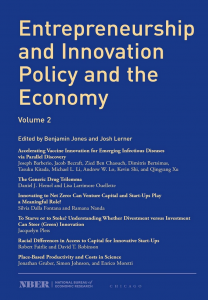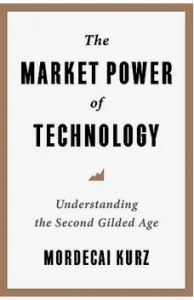It was the fact of a lecture by Dan Breznitz at the University of Manchester for National Productivity Week that alerted me to his book Innovation in Real Places. Sadly I couldn’t get to Manchester for the lecture but I really recommend the book. Its core argument is that the shape of innovative businesses depends on the specifics of their economic context, making the hope to become the next Silicon Valley a forlorn one for most places, and requiring innovation policy to be appropriately tailored.
The aims of innovation policy are common: make sure companies and individuals concerned have the capabilities they need, and support the whole cosystem in which they operate. There are also several policy fundamentals: ensure local firms are plugged into production networks (including internationally); provide the necessary public goods (skills, prototyping production facilities, trade shows…); focus on the whole local ecosystem including whether financing and business models cohere; adjust policy over time as the ecosystem grows.
Given the basics, the book sets out four different pathways with examples about how specific places have followed each. The one that dominates the innovation policy imaginary is the Silicon valley model – frontier innovation, VC finance, star entrepreneurs. (This is looking less good than it did a while ago. And as the book comments in the introduction, “There is nothing like a dosage of competition to shake comfortable oligopolies out of their stranglehold on power.”) Tech startups – like all startups – require extensive social networks, but in this sector they are geographically extended rather than locally-rooted. So even if a Silicon-whatever gets going, the people involved may end up moving to Menlo Park or Mountain View when they succeed – the book gives an example of a tech cluster starting successfully in Atlanta, Georgia, but subsequently moving away. The book argues that the conditions for such clusters are rare in any case, and that the model leads to inequality rather than broad-based prosperity and good jobs in the region.
The second model is the design, prototyping and production engineering stage, with Taiwan being the exaplar. The third is innovation in components and second generation products, “the unsung and despised hero of economic growth,” with examples in Germany and some in China. The final model is production and assembly, so successfully adopted in China’s Pearl River delta region, with extremely successful innovation in modes of production, assembly and also logistics.
Having set out these broad models, the rest of the book is packed with examples of innovation policies both good and bad. As it points out, much policy thinking is lazy. If it gets beyond the aim of being the next Silicon Valley, “one of the most comon ways for regions to fail is to focus on the trendiest complementarity, be it venture capital, university parks, green tech or AI.” Prof Breznitz’s key message is that there is no substitute for detail, and indeed constant willingness to adjust policies as circumstances change. The book identifies a core political challenge: successful innovation policies often succeed by flying below the radar of political attention, but if they do succeed there’s no avoiding that politicization – and rightly so in many ways. Innovation policy is hard enough to get right, but the political economy challenge may be harder still.
Anyway, a wise book, lots of great examples, and hopefully the lecture will go online before long.





